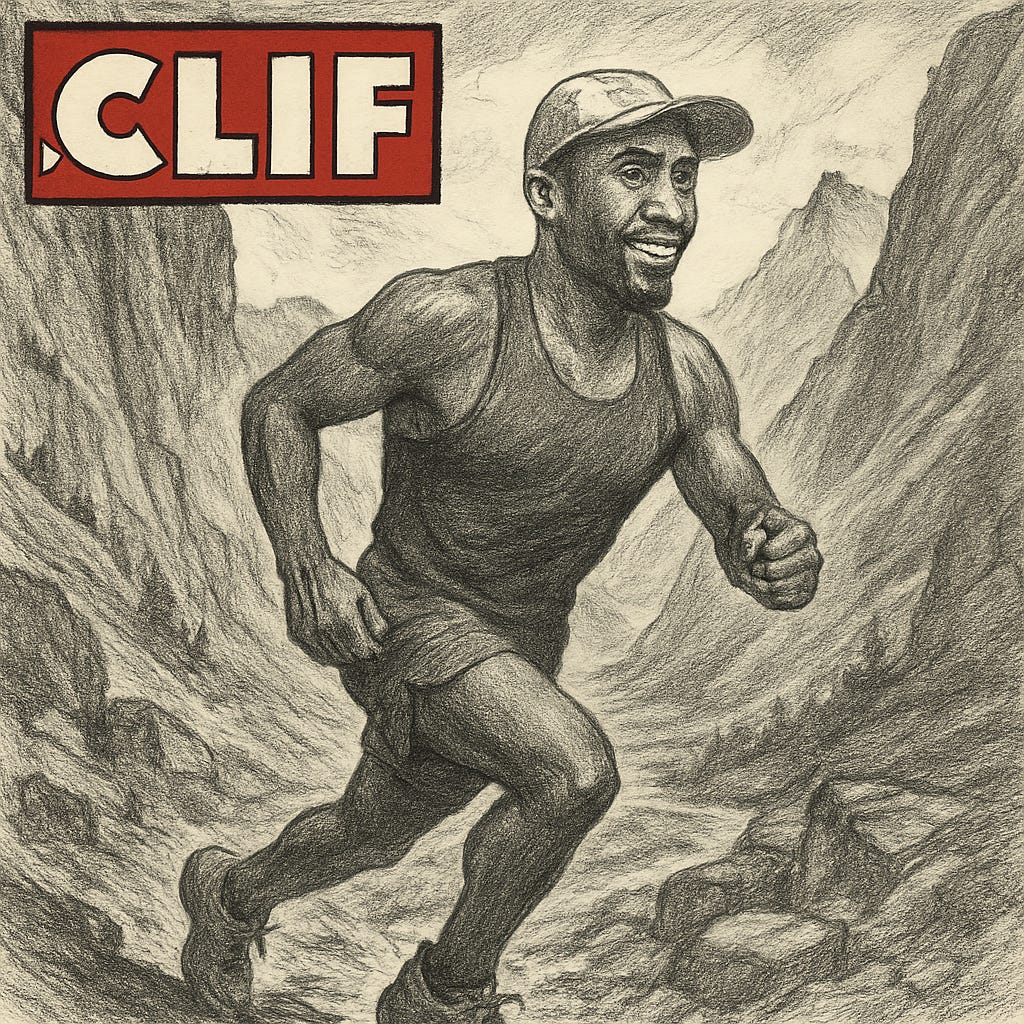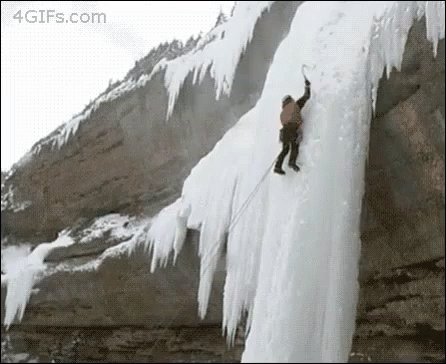How to Run Strides & Sprints The Right Way
Why The Trash Feeling Is Good, The Science of Sprinters Abs & Perfect Warmup Music
TL;DR – No Fluff, Just Facts
🏔 The Valley Between Peaks (a.k.a. Why You Feel Like Trash Sometimes & That’s Great)
💪 Why Sprinters Have Abs
🎧 The Perfect Warmup/Cooldown Music
🏔 The Valley Between Peaks (a.k.a. Why You Feel Like Trash Sometimes & That’s Great)
There’s this trap I fall into where I keep believing progress should feel good. That getting fitter or sharper means riding a constant high, like I’m the poster child for some Clif Bar ad. But that’s not how your body and usually life work. Let me explain.
Progress isn’t linear. It’s not even a wavy line. It’s more like a janky trail run: you think you’ve hit the summit, only to spot another steeper climb just beyond.
Paul Graham, Y-Combinator startup genius, thinker, and essayist, calls this “hill climbing,” and it nails the feeling perfectly. He writes, “When you're climbing a hill, you tend to stop when you reach the top. But if you're willing to go downhill, you can find another, higher hill to climb.”
That’s what the valley is. Not failure. Just the toll you pay to reach higher ground.
I’ve felt it, and I’m sure you have too. You’re legs and arms are heavy, your motivation is low, and your brain is spiraling. But those valleys always preceded a breakthrough. They cleared the runway and gave me the angle to rise again.
Sometimes I tweak one thing—my sleep, my stride, the exact bpms on my playlist to dial in my cadence. Other times, I do nothing and just try not to implode. The first time I pulled back without guilt, it felt like quitting. But I know liken it to a reset strategy and not a surrender.
We skip over the valleys in our stories, but that’s where the real work lives.
So now, when I feel flat, I do the following:
Check if I’m stuck in a cozy plateau
Realign something small—stride/cadence, routine, food
Do the boring durability stuff I usually avoid
Try to be okay, not being okay (THIS IS SO UNDERRATED!)
Last year, I dropped the sub-16 5K chase, and this year, I might (huge might!) drop the sub-3-hour marathon battle. Not because I can’t do it, but because I can, and I know the cost. I’ve burned out before chasing shiny round numbers. Now, I care more about longevity, joy, and balance of running and living. Think: Training that doesn’t break me.
You're not broken. You might just be between peaks.
How to Run Strides The Right Way
Most runners know they should run fast, but almost none of them actually do.
In this episode, I break down how running faster, even for just a few seconds, can make you a better distance runner.
But here’s the catch: most runners know they should run fast, but they don’t. Today, we’re changing that. I’ll show you exactly how to add strides, sprints, windups, and run-throughs to your training so you can become a stronger, faster, and more efficient runner without getting injured.
What you’ll learn:
What these terms mean and why they matter
How to actually do each one, step by step
When to use them in your training
Why we should skip more like kids
Why running fast is a game-changer for distance runners
How to stay injury-free while doing it
Stick around to the middle because I’ve got the fix you need with a free training plan download to get you sprinting, striding, and skipping ASAP.
Watch, read, and listen to the rest on your next run or workout here.
Why Sprinters Have Abs (And Why You Probably Don’t)
Sprinters have abs the way sharks have teeth. Not because they want to show them off, but because they use them.
Distance runners, on the other hand, often think abs are optional. Core work? Eh. Crunches? Maybe. Sprints? Lulz, why?
But here’s some real facts: sprinting might be the most effective hidden ab workout on the planet. Bold claims? Maybe. Let me tell you why I might be right.
What is it?
Sprinting, true sprinting (not just running at your top speed), is short, maximal effort running that comes from out in front (think high knees). Not a tempo run, 5K race or intervals. We're talking 20 to 40 meters, all-out, great form with a full two to four minute rest after each effort. What makes it interesting in this context isn’t speed. It’s why your abs get shredded doing it.
Why does it matter?
Because every time you sprint, you’re violently swinging your arms downward, activating your upper abs in the same way a weighted crunch does. Every step? A ballistic leg raise, meaning your lower abs are firing like crazy, just to control that motion. You’re not just running fast. You’re doing hundreds of reps of a dynamic core workout disguised as running.
And it’s progressive because as you get faster, the demand increases. As your speed improves, so does the ab load. There’s no plateau and no need to “add weight.” The intensity auto-scales better than a startup software business. (So dope!)
Forget planks and dead bugs. You want a core that holds up in the last 10k/6 miles of your marathon? Sprint once a week for four to six reps (10-15 minutes with rest/recovery) total.
How to start
Four to six short sprints, 20–40 meters each, full rest of 2-4 minutes between each rep. Do it on a recovery day or after drills. Grass or track is best. A slight hill/gradient is even better when first starting out. Walk back and no gasping for air. This isn’t conditioning — It’s coordination. Treat it like skill work, similar to learning how to squat with proper form in the gym.
Distance runners obsess over suffering but avoid mental discomfort from something new (yes, read that again, cuz it’s a thing). You’d rather crawl through a lactate threshold workout than sprint clean for 20 seconds total. And that’s why your core turns to Jell-O by 32km (20 miles).
Sprinting isn’t about running fast but more about moving well under pressure. If that gives you better posture, stronger hips, and yeah, a visible six-pack (optional and not always possible for some people genetically)… that’s even better.
Watch the full video here to learn more.
🎧 The Perfect Warmup/Cool Down Music To Listen To
This is great, especially in the morning if you want to transition your cooldown from physical to mental with post-workout mindfulness, meditation, and breath work, as I’ve written about before.
Twenty-Five Minutes (528hz, Binaural Beats, Isochronic Tones) by Open State, aka the co-founder of low caffeine brain and performance supplement, Magic Mind (who was a past sponsor of this newsletter). It also doubles as great productivity tunes for Pomodoro timer-like work.
Go here to listen to it and let me know what you think.






This is great! You keep showing me all the things I have not yet learned about running.